
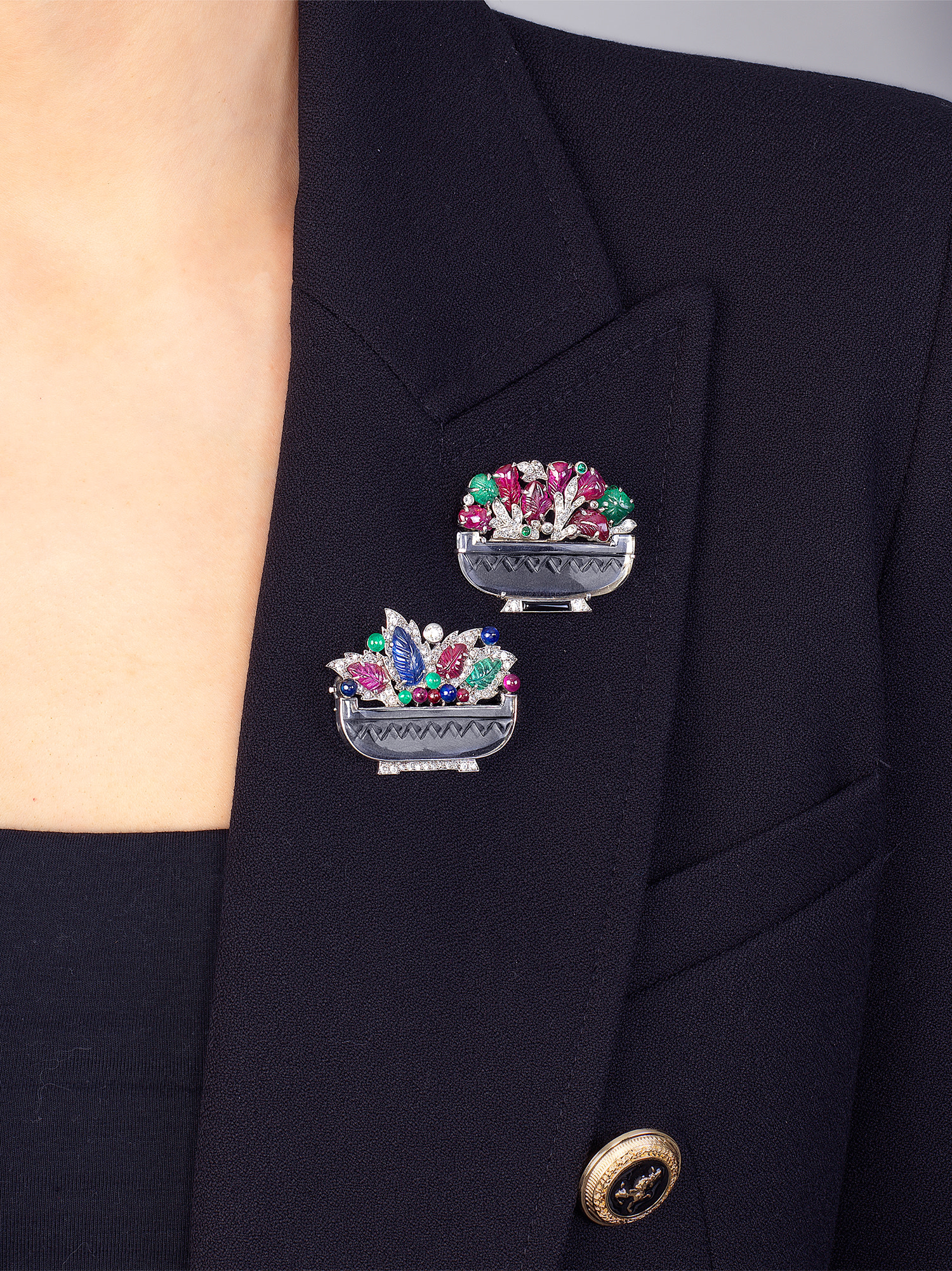
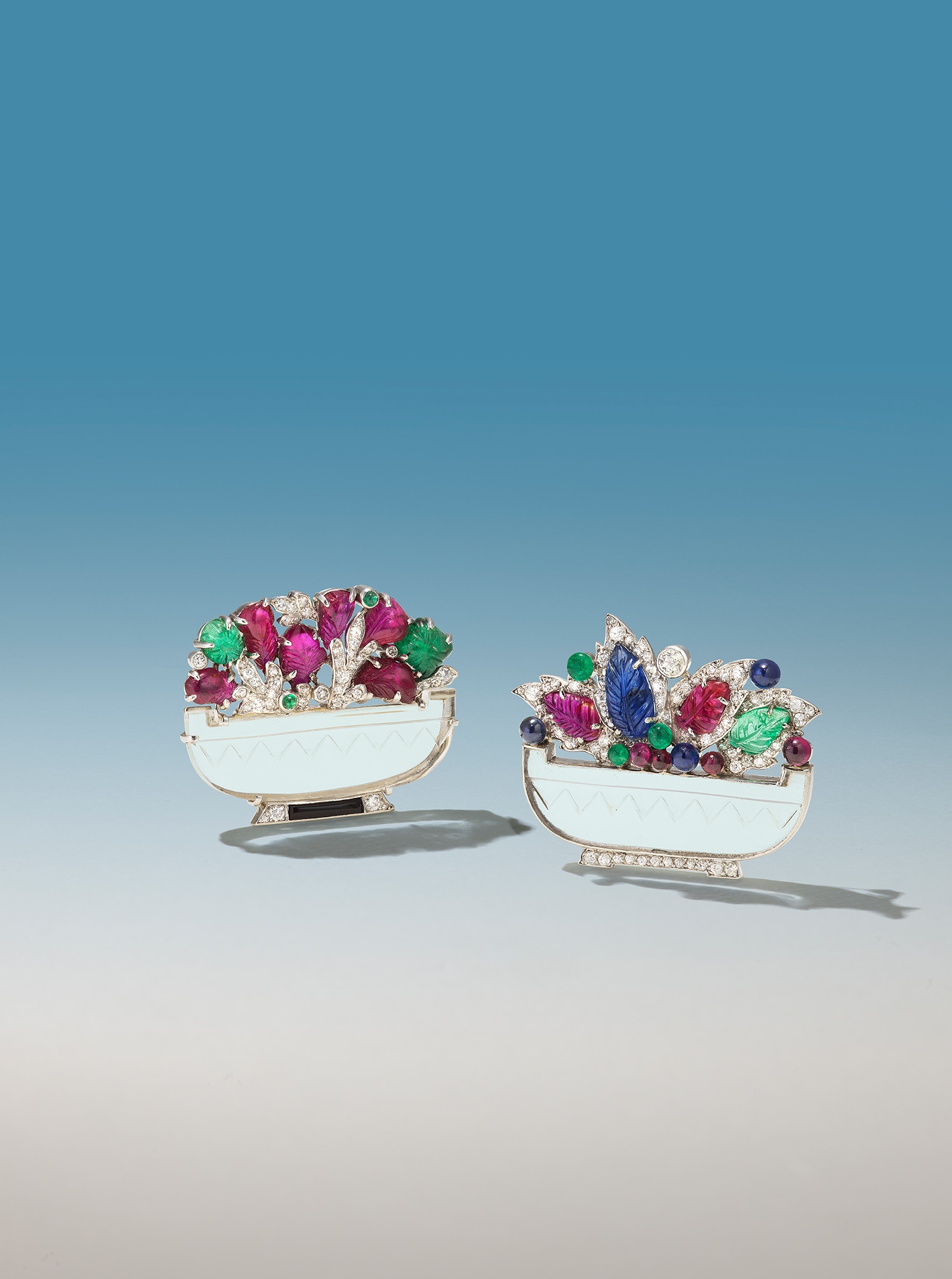

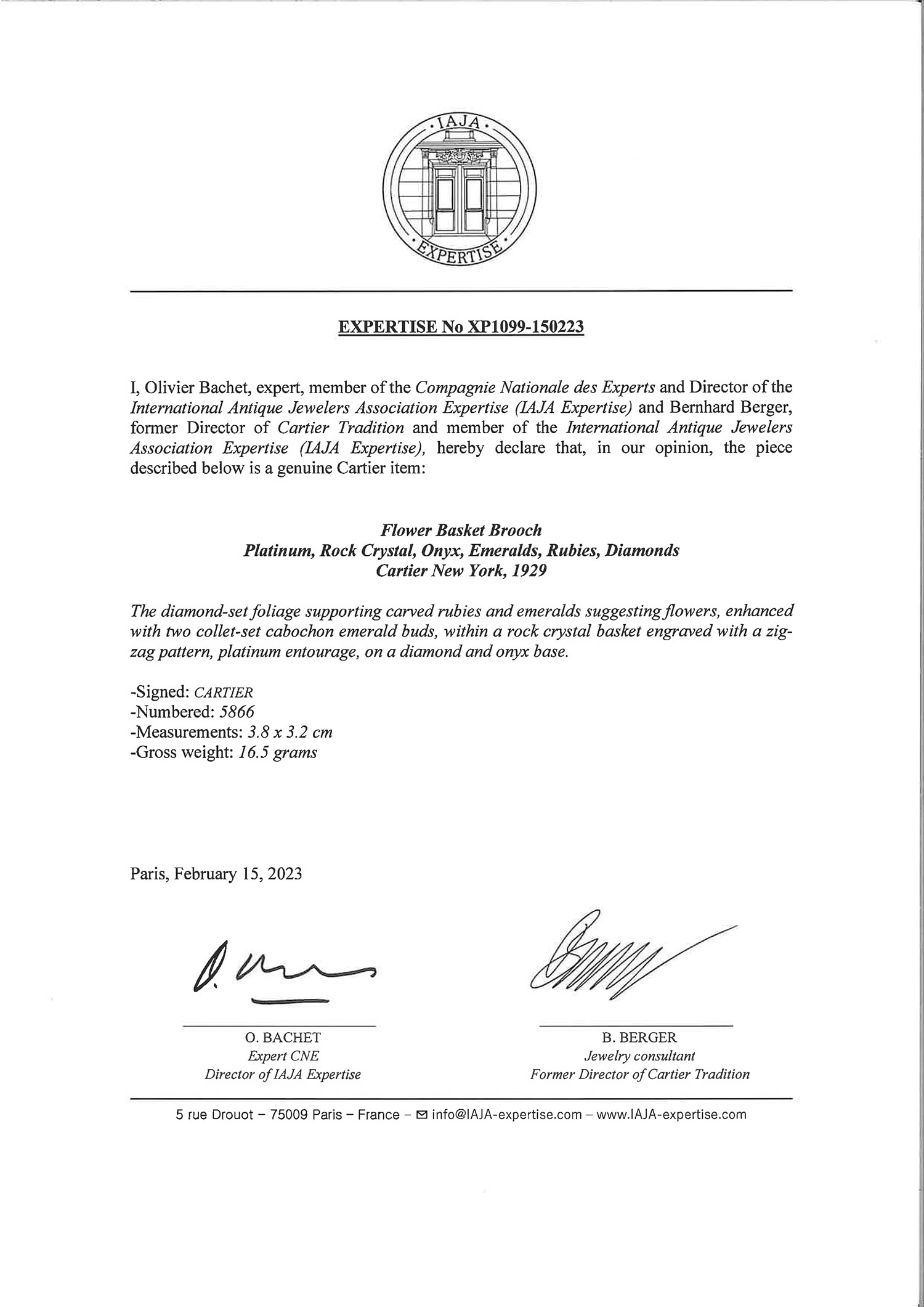
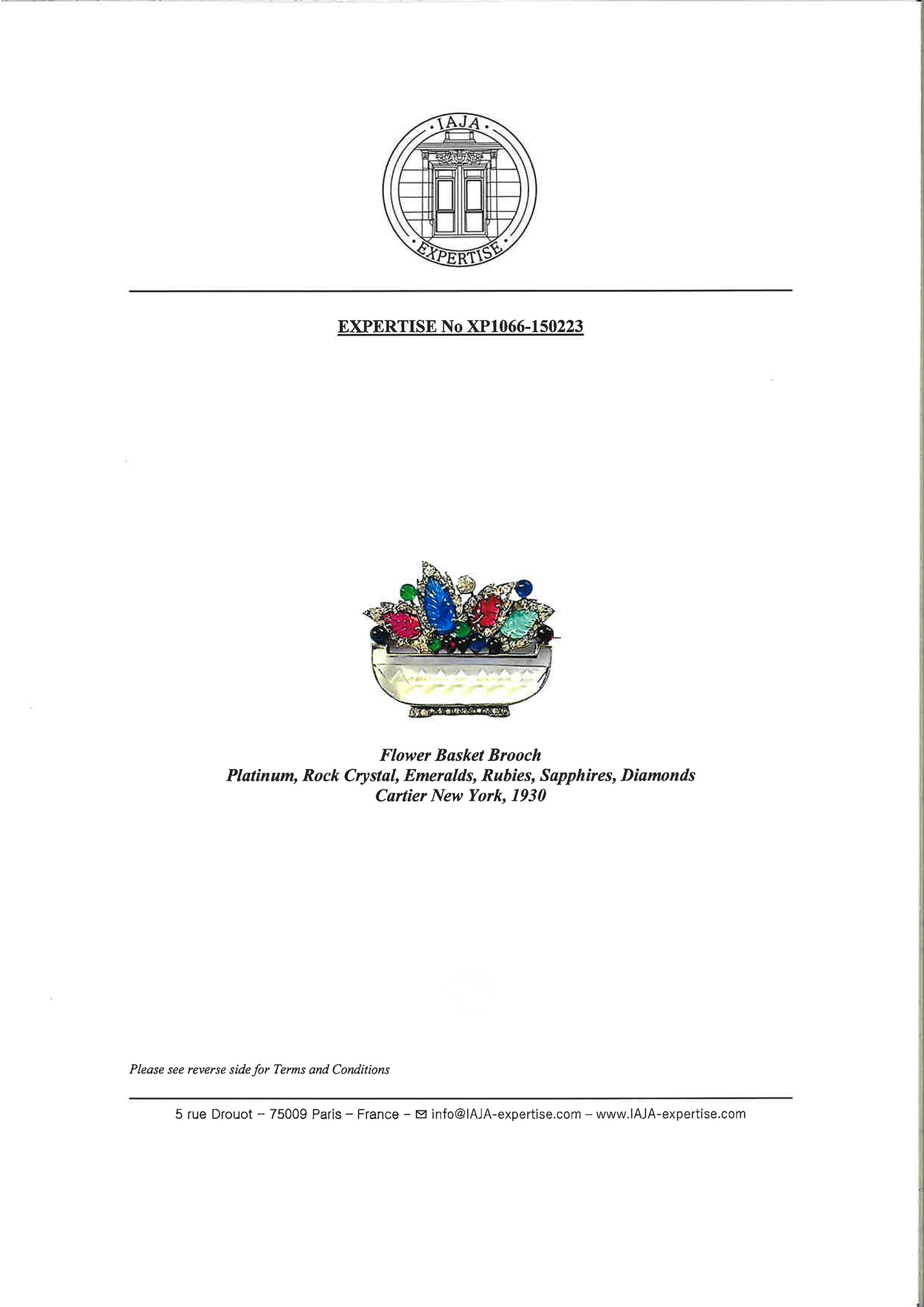
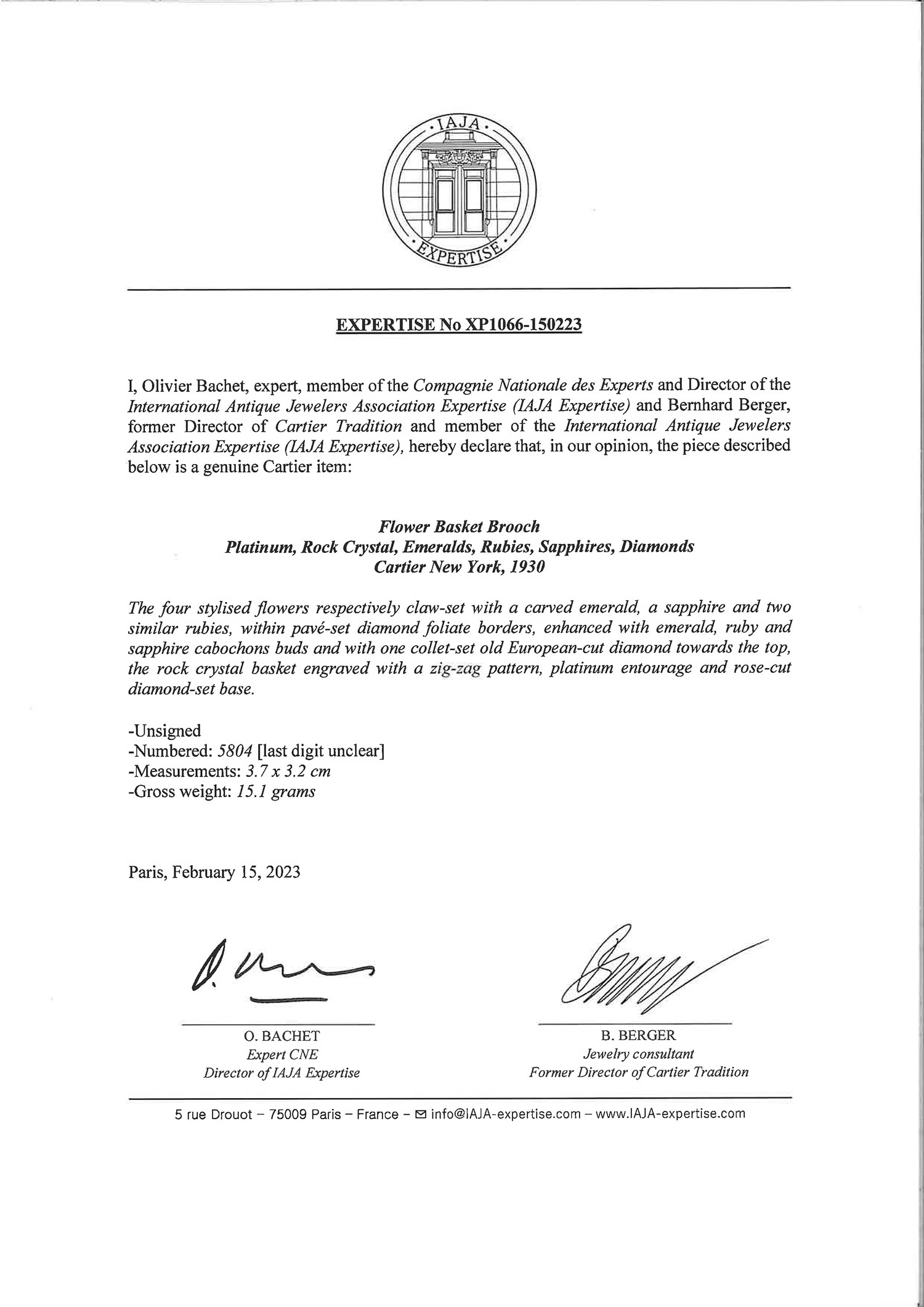







593
Cartier
Pair of Gem Set, Diamond and Rock Crystal Brooches, 'Tutti Frutti', 1920s
Full-Cataloguing
Aside from precious facetted diamonds and gemstones that the maharajas entrusted Cartier to transform in accordance with European fashion at the time, Jacques Cartier also brought back a huge quantity of cared emeralds, rubies and sapphires. These gemstones were incorporated into major pieces of the Maison and soon became a signature style. This interpretation of Indian style with polychrome theme depicting leaves, berries and blossoms is described as ‘Tutti Frutti’, a term that was later patented by Cartier in 1989. Tutti frutti jewellery has been popular among the most discerning collectors and are found in some of the world’s most important collections. They continued to fetch extraordinary prices at international auctions.
The two flowerpot brooches are quintessential ‘Tutti Frutti’ style jewellery of the Art Deco period, employing rock crystal, a very popular material found on brooches, onxy and diamonds for the monochrome palette, and carved gemstones for their explosive colours. Each tutti frutti creation is completely unique and even these two brooches come as a pair, they are singular in their design and overtones.
Cartier
FrenchWith the Constitution of 1848 came a new standard for luxury in France. Founded one year prior by Louis-Francois Cartier, the house of Cartier was one of the first to use platinum in jewelry making. This incredibly expensive material became the stepping-stone for Cartier to experiment in form, mechanisms and attitude. It helped men move from pocket watches to wristwatches, effectively making the watch much more functional and prominent in a man's overall wardrobe.
Cartier did not only touch on functionality. Inspired by a commissioned painting by George Barbier featuring a black panther at the feet of an elegantly bejeweled woman, Cartier began incorporating wild animals in his designs—most notably, Cartier Panthère rings, bangle bracelets and watches. Yet it wasn't until the late 1960s that the house of Cartier debuted their iconic yellow and rose gold LOVE collection, which includes the famous bracelet that only a special screwdriver can open.